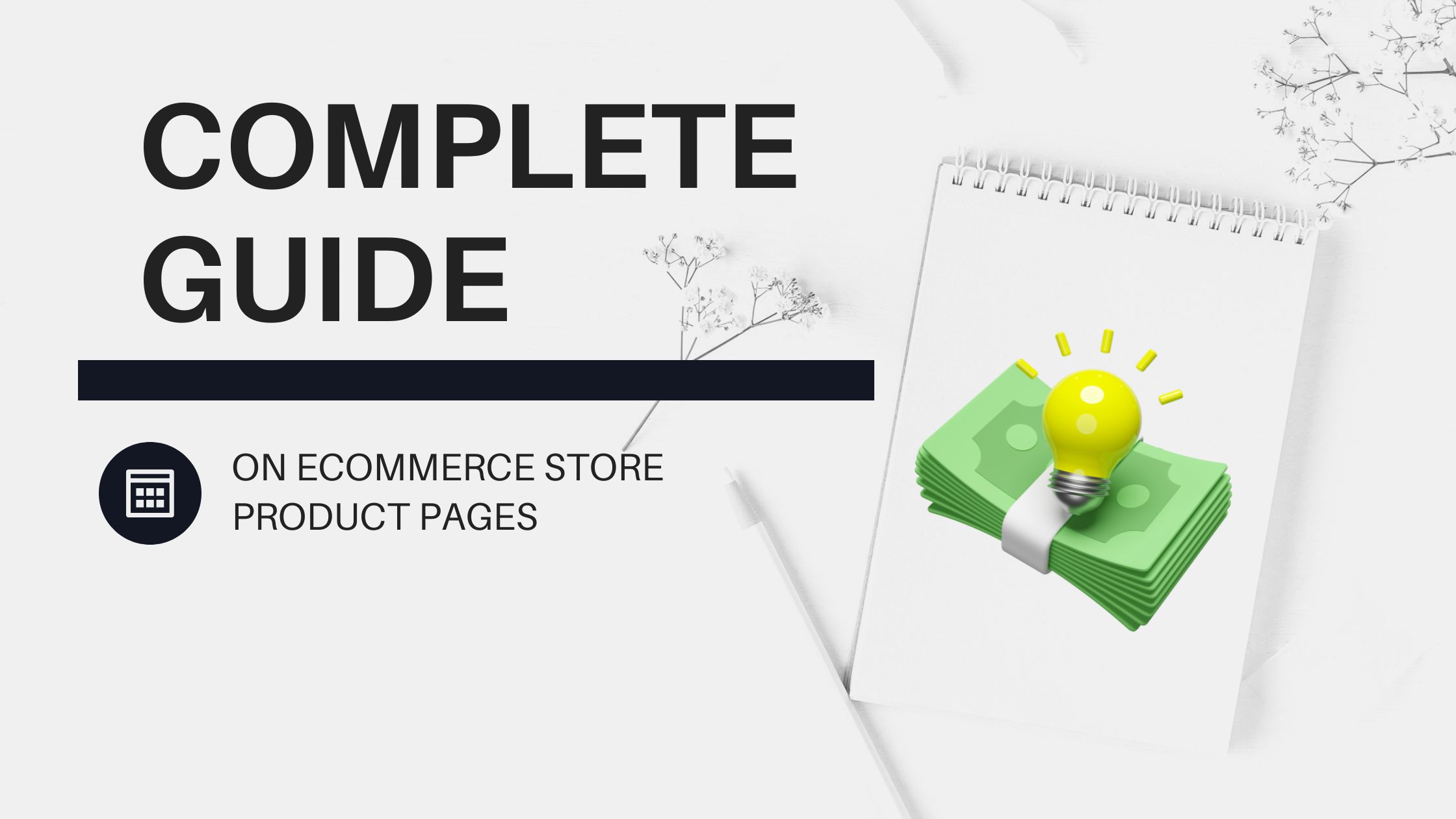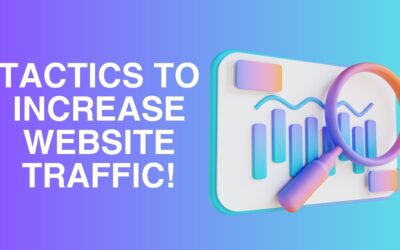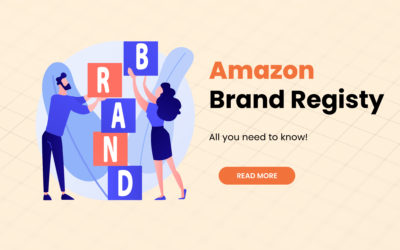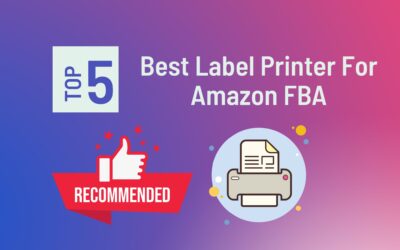A Complete Guide on Ecommerce Store Product Pages
In ecommerce, the product page is where a potential customer decides to make a purchase.
Creating a great product page involves using high-quality images, persuasive text, and smart SEO practices.
When these elements come together, they can really boost your sales and keep customers happy.
This guide will break down what you need to make your product pages not just good, but amazing.
So, what turns a good product page into a great one?
Stick around as we reveal the key strategies to transform your ecommerce store.
How to Set Up Ecommerce Product Pages?
Setting up great ecommerce product pages isn’t too hard if you know what to do.
First, make sure your products are high quality and sourced from reliable places.
Good product photos are a must.
Write unique and clear product descriptions that tell customers what they need to know.
Also, get customer reviews to help build trust and show people that others like your products too.
Let’s know in details:
1. Do Your Product Sourcing
Product sourcing is super important when setting up ecommerce pages that attract and convert customers.
Getting quality products helps you meet customer expectations and build trust.
Start by finding reliable suppliers who offer good quality items at competitive prices. Check out their reputation, product quality, and delivery times.
It’s a good idea to have multiple sourcing channels to avoid depending too much on one supplier. Use wholesale marketplaces, dropshipping platforms, and direct manufacturer relationships to expand your inventory.
Always request samples and verify supplier certifications to be sure of their quality.
Building strong supplier relationships and keeping in touch regularly can get you better deals and exclusive products. This will make your ecommerce store’s offerings better and keep your customers happy.
2. Focus on Store Product Photography
High-quality product photography is key for making ecommerce product pages that grab customer attention and boost sales.
Product images should be clear, bright, and show the item from different angles. This gives customers a complete view. Using professional photography or high-resolution cameras can make your products look great. Adding lifestyle photos can also help. These pictures show the product in real-life settings, helping customers imagine using it.
Make sure to optimize images for fast loading times, but don’t let the quality drop. This keeps the user experience smooth.
Properly naming and tagging images can also help with SEO, making your products easier to find. In short, great product photography is vital for successful ecommerce. It directly affects how much customers engage and how often they buy.
3. Add Unique Descriptions For Products
Creating unique product descriptions is crucial for building awesome ecommerce pages. They don’t just inform but also grab the attention of potential buyers.
A good product description shows off the product’s features, benefits, and what makes it special. This sets it apart from the competition.
It should talk directly to the target audience, addressing their needs and problems. Using relevant keywords for SEO is important too.
Don’t use boring, generic descriptions from the manufacturer. Original content that matches your brand’s voice is better.
Clear and detailed descriptions help customers feel sure about their purchase. Adding a bit of storytelling can make an emotional connection.
Unique and interesting product descriptions can boost conversion rates and build customer loyalty.
4. Get Ecommerce Store Product Reviews
Gathering customer reviews is a great way to boost the credibility and appeal of your ecommerce store. Reviews offer social proof, helping potential buyers make informed decisions.
- Automated Email Requests: Send follow-up emails after a purchase to encourage customers to leave reviews.
- Incentivize Reviews: Give discounts or loyalty points to customers who write reviews.
- User-Friendly Review Forms: Make sure the review process is simple and works well on both desktop and mobile devices.
- Highlight Reviews: Show top-rated reviews prominently on product pages to grab attention.
What are the key elements of a persuasive Ecommerce product page?
A persuasive ecommerce product page needs several key elements to drive sales and keep customers happy.
You need a catchy title and a clear logo.
A good product description is also essential, along with a big ‘Add to Cart’ button.
Make sure to include the price, any special offers, and high-quality images or videos of the product.
Let’s know in details.
1. Title, Logo, Description
Creating a persuasive ecommerce product page is all about focusing on the title, logo, and description. These elements play a big role in influencing a customer’s decision to buy.
A good title grabs attention and tells what the product is all about. The logo makes customers trust the brand and feel confident about its quality. The description gives detailed info, answers questions, and highlights key features.
- Title: Make it clear, concise, and benefit-driven.
- Logo: Display the brand logo prominently so it aligns with the product.
- Description: Write a detailed and appealing description that answers common questions.
- Keywords: Add relevant keywords naturally to help with search engine optimization (SEO).
These factors work together to make the product page more persuasive.
2. Add To Cart Button
After you’ve nailed the title, logo, and description, the next big thing on your ecommerce product page is the ‘Add To Cart’ button.
This button is super important because it helps turn browsers into buyers. To do its job well, it needs to be easy to find without any scrolling. Make it pop with a color that stands out from the rest of the page.
The text on the button should be clear and make people want to click, like ‘Add to Cart’ or ‘Buy Now.’ It should be big enough to click easily, whether someone is using a phone, tablet, or computer.
Adding a little animation or a hover effect can also make the button more eye-catching and fun to interact with.
3. Highlighting the Price and Special Offers
Putting the product price and any special deals where people can easily see them is key to turning visitors into customers. Clear and visible pricing helps build trust and makes it easier for people to decide to buy. Special offers can make things feel urgent and make the product seem like a better deal.
Key things to make sure your page works well:
- Clear Pricing: Make the price stand out with a bold, easy-to-read font.
- Discounts and Savings: Show both the original price and the sale price to highlight the savings.
- Limited-Time Offers: Use countdown timers or banners to create a sense of urgency.
- Free Shipping and Bundles: Mention free shipping or bundle deals to add extra value.
These elements together make your product page more attractive and help turn visitors into buyers.
4. Product Images and Videos
High-quality product images and videos are key to turning visitors into customers.
They act like a virtual touchpoint, letting customers check out products closely.
High-res images from different angles, with zoom-in features, show the product’s texture, color, and quality.
Videos showing the product in action can address concerns and show how it works.
Lifestyle images help buyers imagine the product in real-life situations. Consistent lighting and background make everything look professional. Alt text for images helps with SEO and accessibility.
All these elements together build trust and encourage purchases.
5. Shipping and Returns
Having clear and easy-to-understand shipping and returns policies is super important. It helps customers trust your store and makes them more likely to buy.
- Shipping Costs: Let people know how much shipping will cost and if there’s any way to get free shipping.
- Delivery Timeframes: Give honest estimates on when their order will arrive. Include both processing and transit times.
- Returns Process: Explain how to return items in a simple way. Mention any time limits and steps they need to follow.
- Refund Policy: Tell them how and when they’ll get their money back. Don’t forget to include info on any fees or special conditions.
6. Wishlist
Another key feature for a great ecommerce product page is the wishlist. This feature lets customers save products they like for later. It makes shopping easier and increases the chances they’ll come back to buy.
A wishlist serves as a gentle reminder of items they’re interested in but not ready to buy yet. It also helps businesses understand what customers like, leading to better, personalized marketing.
Make sure the wishlist is easy to use and works across all devices. It should be linked to user accounts for a seamless experience.
7. Product Suggestions
A good ecommerce product page needs high-quality images, detailed product descriptions, and strong calls-to-action. But don’t forget product suggestions. These can really boost the user experience and sales by showing related and complementary items.
Product suggestions are effective when:
- Personalization: Tailor recommendations based on what users like and their shopping habits.
- Relevance: Show items that go well with or are often bought with the product being viewed. Visibility: Place suggestions where they can be seen easily, but don’t let them overshadow the main product.
- Clear Call-to-Action: Use simple buttons to add suggested products to the cart easily.
Adding these elements makes product suggestions more persuasive and valuable for ecommerce success.
8. Social Media Shares
Using social media shares is crucial for making your ecommerce product page more visible and credible.
By adding social sharing buttons, you make it easy for customers to share your products with their friends and family. This helps you reach more people without extra effort.
It also builds social proof because people trust recommendations from people they know.
You can also use user-generated content like customer reviews and photos.
When shared on social media, these pieces of content make your brand feel more real and trustworthy.
Make sure the social sharing buttons are easy to find on your product page.
This will help you get the most out of them.
All in all, social media shares can really boost your ecommerce success.
9. Contact Details
Having clear and easy-to-find contact details on your ecommerce product page is a great way to make customers feel confident and trust your store.
When people can get in touch with you easily, it makes their shopping experience better.
- Phone Number: Show a big, easy-to-read phone number for direct questions.
- Email Address: Give a special customer service email for detailed help.
- Live Chat: Add a live chat feature for instant support and quick answers.
- Contact Form: Include a simple contact form so customers can ask questions without leaving the page.
These contact details not only make customers happy but also make your store look more trustworthy.
How can I effectively target my Ecommerce products to a niche audience?
To target your ecommerce products to a niche audience, first make sure you know exactly who they are.
Understand what they like and how they behave.
Find out which platforms and channels they use the most.
This way, you can create content that speaks to them and use targeted advertising effectively.
Working with influencers in your niche can help you reach more people and boost engagement.
Define Your Target Audience
Understanding who your target audience is can make a huge difference in how you sell your products online.
Start by creating detailed profiles of your ideal customers. Think about their age, gender, income, and education. Also, consider what they like to do, their lifestyle, values, and attitudes.
Look at how they shop. Do they stick to one brand? What’s their buying pattern? (1)
Check out your competitors too. See who they are targeting and find gaps you can fill. Use data from your current customers to fine-tune your approach.
- Demographics: Age, gender, income level, education.
- Psychographics: Interests, lifestyle, values, attitudes.
- Behavioral Traits: Purchase history, brand loyalty, buying patterns.
- Competitor Analysis: Who they are targeting, market gaps, positioning.
These steps will help you connect better with your niche audience.
Learn Where Your Audience Is Active
Knowing where your audience is most active is super important for marketing your ecommerce products to a specific group.
Start by doing some good market research to find out which social media platforms, forums, and websites your target audience visits often.
Use tools like Google Analytics, social media insights, and customer surveys to collect data on what they like and how they behave online.
When you know where your audience hangs out, you can adjust your marketing strategies to focus on the channels that get the best results.
Join niche-specific communities and work with influencers to boost your visibility and trust with your target audience.
This smart approach makes sure your marketing is both effective and efficient.
Create Relevant Content
Making content that clicks with your audience means knowing what they need, like, and worry about. Do your homework and gather information to make content that talks right to them. This way, you get more engagement and better results.
Try these strategies:
- Know Your Customers: Create profiles of your ideal customers, including their ages, habits, and why they buy things.
- Personalize Your Content: Use specific product descriptions and recommendations that match your audience’s interests and worries.
- Teach and Inform: Write blogs, guides, and make videos that answer questions or solve problems your audience has.
- Use Customer Reviews: Get happy customers to share reviews, testimonials, and social media posts to build trust.
Use Targeted Advertising
To target your ecommerce products to a niche audience, start by using data analytics to understand and segment your customer base.
Analyze customer behaviors, preferences, and buying patterns. Tools like Google Analytics and Facebook Insights can help you gather useful data.
Create detailed customer personas to represent different segments of your audience for precise targeting.
Use retargeting strategies to reach potential customers who have already shown interest in your products.
Platforms like Google Ads and social media advertising are great for running highly targeted campaigns based on demographics, interests, and online behavior.
Tailoring your ads to the specific needs and preferences of your niche audience can boost engagement and conversion rates.
Work with Influencers
Partnering with influencers who have a loyal following in your niche can really boost the visibility and credibility of your ecommerce products.
Influencers create genuine, engaging content that connects with their followers, sparking interest and potential sales.
To work well with influencers:
- Find influencers whose audience matches your target market.
- Offer special deals or products for influencers to promote, making it feel exclusive.
- Use user-generated content by having influencers share their personal experiences with your products.
- Track performance metrics like engagement rates and conversions to see how well the influencer partnership is working.
Create Referral Program
Creating a referral program can be a smart way to get your ecommerce products in front of a specific audience.
By getting your current customers to tell their friends and family, you can grow your reach without spending a ton on ads.
Offer rewards like discounts, free products, or early access to new items to motivate them.
Make sure the referral process is easy to follow. This helps keep people interested and willing to join in.
Keep track of who’s referring the most and see what works best.
This boosts loyalty and brings in traffic that’s more likely to buy. Plus, it helps build long-term customer relationships.
How to create effective Ecommerce product descriptions?
Creating effective ecommerce product descriptions is key to catching the interest of potential customers and boosting sales.
Use natural language to connect with readers more genuinely. Explain how your product solves a problem to show its value.
Be creative and help readers picture the product in their minds. Make sure descriptions are easy to skim, too.
This way, you improve user experience and increase conversion rates.
Use natural language
To write great ecommerce product descriptions, use natural language that speaks to potential customers and clearly shows the benefits and features of the product. A conversational tone helps build a connection with the audience, making the description more relatable and engaging.
- Simplicity: Skip the jargon and complex terms; use simple words that everyone can understand.
- Personality: Add a bit of the brand’s personality to make the description feel more human and less robotic.
- Clarity: Be clear and concise so that the key information is easy to understand.
- Descriptive Phrases: Use vivid and engaging descriptions to paint a clear picture of the product’s attributes.
Explain how your product solves a problem
Explaining how your product solves a problem is key to crafting effective ecommerce descriptions that connect with customers.
Start by pinpointing the specific issues your audience faces. Clearly describe how your product tackles these problems, offering real benefits and practical solutions.
For example, if you’re selling noise-cancelling headphones, focus on how they get rid of background noise, helping people concentrate better.
Use everyday examples to show how well the product works, making the solution clear and convincing.
Be creative with your descriptions
Creating awesome ecommerce product descriptions takes a mix of creativity and strategy. You want to grab attention and get people to buy.
- Storytelling tells a story about the product. Make it relatable and memorable.
- Sensory Words use words that appeal to the senses. Words like ‘silky’ or ‘crisp’ can paint a vivid picture.
- Customer-Centric Language talks directly to the customer. Address their needs and desires.
- Power Words use persuasive and emotionally charged words like ‘exclusive,’ ‘limited-time,’ or ‘guaranteed.’ These words can create interest and urgency.
These tactics can turn boring descriptions into exciting and persuasive ones that get people to buy.
Help your readers visualize
To make your ecommerce product pages more effective, help your readers visualize the product.
Use vivid imagery and descriptive language to paint a clear picture of what the item looks and feels like. Talk about the texture, color, and size to create a mental image that sticks with potential buyers.
Show how the product fits into everyday life with lifestyle scenarios to make it more appealing.
High-quality images, videos, and 360-degree views can go along with your text, giving a complete view of the product.
When customers can imagine owning and using the product, it makes the jump from browsing online to buying it much easier. This increases the chances of a purchase.
Make it easy to skim read
Creating effective ecommerce product descriptions means making them easy for customers to skim. Online shoppers have limited attention spans, so concise and organized information is key. It enhances user experience and boosts conversions.
- Use bullet points: List essential features and benefits. It helps customers understand quickly.
- Incorporate subheadings: Break up text with clear headings. This guides readers through different sections.
- Highlight key terms: Use bold or italic fonts for crucial details. It makes important info stand out.
- Keep paragraphs short: Limit each paragraph to a few sentences. This keeps it readable and engaging.
When should I update my Ecommerce store’s product catalog?
You should update your ecommerce store’s product catalog to match seasonal trends, inventory changes, and promotional events.
Seasonal trends like holiday seasons or back-to-school times affect what people want to buy, so updating your products to fit those needs is important.
New products or discontinued items should be updated quickly to keep customers happy and operations smooth.
Promotional events, such as sales or exclusive launches, need careful updates to showcase special deals and keep stock levels accurate.
Regularly reviewing and updating your product catalog helps keep shopping exciting and accurate, builds customer trust and boosts sales.
How do I optimize product listings for SEO?
Optimizing product listings for SEO means using the right keywords, great images, and detailed descriptions. This helps your product show up more often in search results.
- Keywords: Use important keywords naturally in product titles, descriptions, and meta tags. This helps search engines find your product.
- High-Quality Images: Include clear, high-resolution images with descriptive alt text. This makes your listing look good and helps with search indexing.
- Detailed Descriptions: Write detailed descriptions that explain features, benefits, and specifications. Make them interesting and easy to read.
- Customer Reviews: Get customers to leave reviews and ratings. Fresh content from reviews boosts credibility and search visibility.
Follow these tips (1) to make your product listings more discoverable and appealing.
How to optimize product recommendations in Ecommerce?
Smart product recommendations can boost sales and make shopping more fun in an online store.
Using data and machine learning, you can determine what customers like and suggest things they might want to buy. Personalized recommendations based on what people have looked at or bought before make the shopping experience feel special.
Showing items that other customers bought or popular products can also help people decide to buy.
Trying out different recommendation strategies with A/B testing can help find the best ways to suggest products. Placing recommendations in key spots, like near the ‘Add to Cart’ button, makes them more noticeable and likely to be clicked.
The main goal is to give customers helpful and interesting product ideas to keep them happy and boost sales.
How to manage product reviews and ratings in Ecommerce effectively?
To effectively manage product reviews and ratings in ecommerce, encourage authentic feedback, monitor reviews regularly, respond promptly, and use verified purchase badges.
Encouraging genuine feedback can be facilitated through follow-up emails and incentives, ensuring customers share their real experiences.
Regularly monitoring reviews helps manage customer perceptions and address issues swiftly.
Responding to both positive and negative reviews demonstrates a commitment to customer satisfaction.
Additionally, highlighting reviews from verified buyers with badges enhances credibility and trust.
What’s the role of product photography in ecommerce sales?
High-quality product photography is essential for driving ecommerce sales.
Images are often the first interaction potential buyers have with a product, and clear, well-lit photos significantly enhance perceived value and trust.
Detailed images allow customers to closely inspect the product, compensating for the inability to physically touch or try it. Multiple angles, zoom features, and lifestyle shots provide a comprehensive view, aiding customers in making informed decisions.
Professional images reduce return rates by setting accurate expectations.
Investing in superior product photography attracts attention and differentiates your store from competitors, driving higher conversion rates and customer satisfaction.
Effective product imagery is indispensable for ecommerce success.
Wrapping Up
The success of ecommerce product pages depends on several factors like reliable suppliers, high-quality photos, and unique product descriptions.
Clear information, strong calls-to-action, and customer reviews make pages more convincing.
Keeping catalogs updated and optimizing for SEO helps maintain relevance and visibility.
Managing product recommendations and reviews well builds consumer trust and engagement.
All these practices together create a strong and effective ecommerce platform.
Mastering E-commerce: Tactics to Significantly Increase Website Traffic
Mastering E-commerce: Tactics to Significantly Increase Website TrafficThe Importance of...
How Long Does Amazon Brand Registry Take?
How Long Does Amazon Brand Registry Take?You've painstakingly built your brand and now, you're...
Finding the Best Label Printer for Amazon FBA: Top Picks & Reviews
Finding the Best Label Printer for Amazon FBA: Top Picks & Reviews Why don't Amazon FBA...






